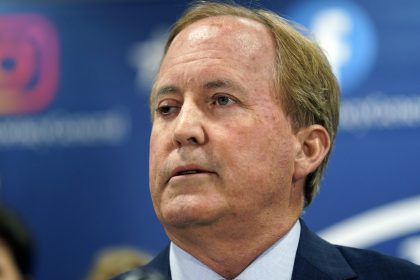Hospitals Race to Set Vaccine Priorities for Health Care Workers

Large hospital systems are grappling with how best to decide which health care workers will be vaccinated first for COVID-19, a daunting task when it’s unclear which shots they’ll get, how many and when they’ll arrive.
The first COVID-19 vaccine could be cleared for U.S. use as soon as next month, with Pfizer Inc. and BioNTech SE’s candidate already under review and Moderna Inc.’s shot not far behind. Federal officials, meanwhile, have signaled that health care workers and older Americans at high risk should be vaccinated as step one in what could set off months of fraught decisions involving other key priority groups.
But following those initial guidelines could prove difficult. With 21 million health care workers in the U.S., there almost certainly won’t be enough doses to reach them all at once. That’s forcing hospitals to categorize their workers based on best-guess distribution estimates, a task made even more complex for some systems by a patchwork state-by-state approach.
Minnesota’s Allina Health system, which employs 15,600 workers who have direct contact with patients in Minnesota and Wisconsin, is estimating it could get 3,000 to 4,000 doses initially. The plan: Prioritize those that interact directly with coronavirus patients by listing each worker by their job type and the units they work in.
“We’re looking at all employees, where they work, what their roles are and what their exposure risk is,” said Ryan Else, a doctor who is overseeing the coronavirus response in Allina Health’s hospitals.
Health systems that operate across state lines face an even bigger challenge. While states are taking cues from federal guidelines, they are developing their own priority lists, creating a situation where some employees in one state might get vaccinated before their peers in another.
“How fair does that feel to people in the same system?” said Amy Compton-Phillips, a doctor and chief clinical officer at Providence, which operates 51 hospitals, as well clinics and medical offices across seven states.
Like Allina, Providence also plans to vaccinate workers based on their roles in an attempt at fairness. The health system will notify workers when it’s their turn to get vaccinated. It is also creating an appeal process if people think groups were misclassified. “When things are in short supply, you make really hard decisions. They don’t feel good,” Compton-Phillips said.
Federal officials plan to initially send 6.4 million doses across the country, according to Gus Perna, Operation Warp Speed’s chief operating officer. More doses will then be sent out on a weekly basis with the goal of distributing 40 million doses by the end of the year, Perna said on a call with reporters Tuesday.
Shipments will be divvied up across states based on the size of their adult populations, and not in response to any virus surges, U.S. Department of Health and Human Services Secretary Alex Azar said on the call.
“We wanted to keep this simple, first because we’re seeing nationwide spread and susceptibility to the disease,” Azar said. “But also, once we pass through these initial tranches where we’re in much more of a scarcity situation, we’re eventually going to get to the point where it would need to be per capita. So instead of having multiple methodologies, we thought it best to keep it simple.”
Some health systems are taking a more granular approach in preparing for use of the shots.
Advocate Aurora Health Inc., with 26 hospitals and even more clinics and doctors across Illinois and Wisconsin, is identifying workers at greatest risk of severe illness, anticipating it will not receive enough doses to cover employees evenly. That means factoring in details like how prevalent the coronavirus is in a particular community, as well as employees’ risk factors, said Robert Citronberg, a doctor and executive medical director of infectious disease and prevention.
“We want to target as best as possible the people who are most likely to get severely ill from COVID, and we know those are older people, people with underlying medical conditions,” Citronberg said.
New York’s Northwell Health, with 23 hospitals, has already compiled a spreadsheet of its 74,000 workers that categorizes them by their risk of catching the novel coronavirus on the job, according to Mark Jarrett, who is a doctor and the system’s chief quality officer.
Northwell’s calculation weighs how much employees interact with infected patients and, like Advocate Aurora, how prevalent the virus is in the community. That second data point could change at times, resulting in people working in areas with more spread being vaccinated first.
And Jarrett brings another issue to the table. He’s worried less about people clamoring for a vaccine and more about workers not wanting one, a fear other hospital executives across the country echoed.
Health systems already had to contend with anti-vaccination movements when concerns about the quick speed of COVID-19 vaccine development further spooked workers, Providence’s Compton-Phillips said.
Allison Suttle, a doctor and chief medical officer of Sioux Falls, South Dakota-based Sanford Health, hopes clinical trial data will reassure the system’s workers. Internal surveys found more people said they would take a COVID-19 vaccine after Pfizer and Moderna released early results showing their candidates were each around 95% effective.
Cautiously Optimistic
“I’m optimistic, cautiously optimistic, and proud of our health care workers that they’re willing to jump up, stick out their shoulder and get the vaccine,” Suttle said.
If and when the Food and Drug Administration authorizes vaccine candidates, the Centers for Disease Control and Prevention will make its final recommendations for whom to vaccinate. Members of the CDC’s immunization committee will review the data for clues on whether the formulas work better in some groups than others.
In the meantime, health systems will continue preparing as best they can. When asked whether Northwell knows how many doses it will receive, Jarrett laughed.
“Nope,” he answered. Any estimates are likely to change, Jarrett said, and even the smallest of fluctuations could make a big difference.
___
(c)2020 Bloomberg News
Distributed by Tribune Content Agency, LLC

























